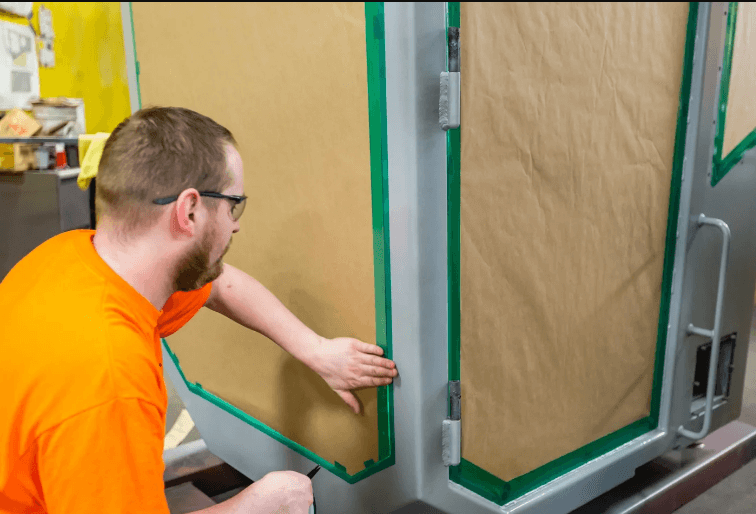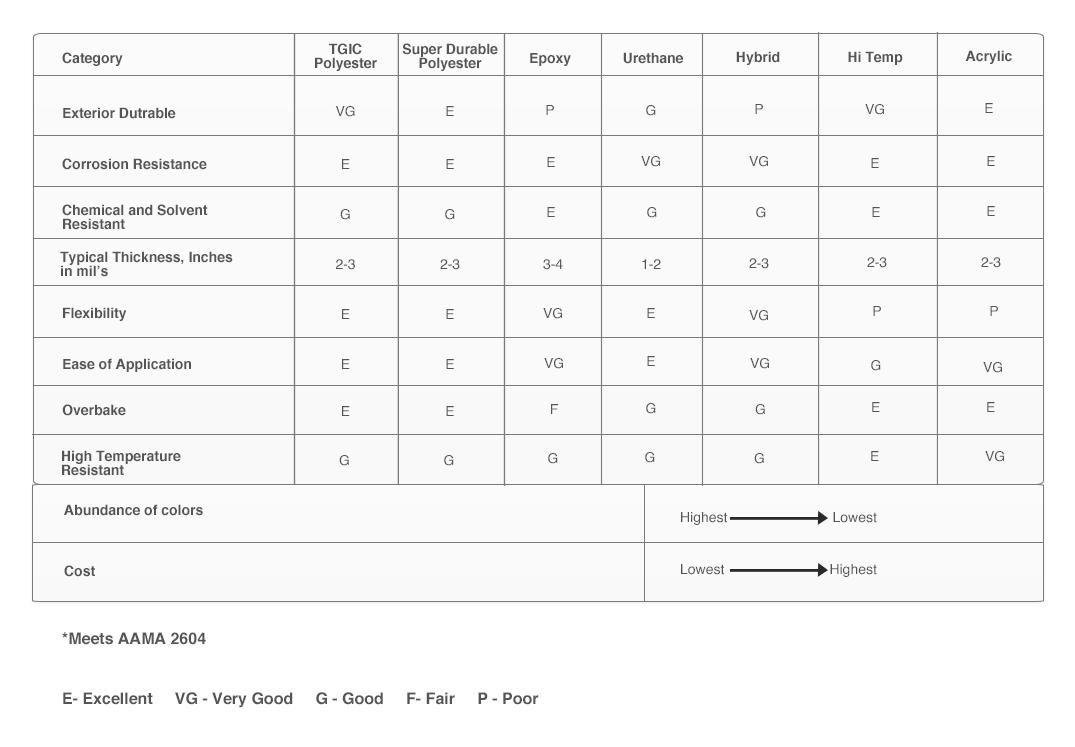
Powder Coating
Is powder coating right for your next project? Our team at J-Tech Powder Coating LLC in Schofield, WI has created a comprehensive guide to help you learn more about our meticulous process, the recommended paints for different applications, and other relevant information about powder painting.
Fast Facts About Powder Coating
- Advanced method of applying a decorative and protective finish to a wide range of materials and products.
- Finely ground particles of pigment and resin are electro-statically charged and sprayed onto pre-washed and surface etched objects to be coated.
- The object to be coated is electrically grounded so the charged powder paint particles adhere to it until melted and fused into a solid coating in a curing oven.
- Powder painting is: tough, attractive, durable, scratch-resistant, offers high-quality appearance, colorful, versatile, and long-lasting.
- The process is environmentally-friendly and virtually pollution-free. Unlike liquid paint, no solvents are used, so no amounts of VOCs are released into the air.
Fast Facts About J-Tech Powder Painting
- Our focus is low volume painting on either large or small parts. We can powder paint objects that fit within a 8' x 8' x 30' space.
- Quick turnaround - facilitating lean manufacturing operations.
- Specializing in numerous colors and color changes.
- Customized projects includes multiple color options and masking.
Call us to discuss your painting requirements
Contact UsAbout Powder Painting
- Powder paint only comes in pre-made colors. They cannot be mixed. The most common paints are the polyesters which use the RAL color system (see below), but are available in some other stocked colors. Any special colors must be custom made which add cost and may prolong delivery time.
- Typically, the powder paints come as high gloss. However, you can get some medium gloss and low gloss colors. There are additional ways to change the gloss for your application as well.
- There are various textured and metallic looking paints, all at higher costs. For the best durability and longest life in long-term weathering or abusive service applications, we recommend an epoxy primer undercoat with your color of choice for a polyester topcoat. We need to know about areas that need to be masked and plugged so they do not get painted.
- The most important thing to consider in your powder coating project is part preparation. Typical single coat wet paint thickness is less than 0.0005 inches. See chart below for typical single coat powder paint thicknesses.
Typical Properties of Thermosetting Powder Coating Paints

Product Recommendations Based on Resin Systems
Epoxy
Epoxies offer coatings with excellent mechanical and chemical resistance properties when used on interior applications or for exterior applications where changes in color, gloss and appearance are acceptable. Generally, epoxies are not recommended for exterior application because of rapid loss of gloss and color when exposed outdoors.
Hybrid Epoxy/Polyester
Hybrids offer most of the advantages of the epoxies in mechanical and chemical resistance properties, and offer brighter colors than many epoxy formulations. They are sometimes more economical than epoxies but do have less solvent resistance. Hybrids are also not recommended for exterior applications where changes in color, gloss and appearance are not acceptable.
Urethane Polyester
Urethane Polyester powders are thin film exterior durable coatings that offer good mechanical and chemical resistance properties in the range of 1 to 2.5 mils. These powders can be used both on interior and exterior applications. They are not recommended for films greater than 4 to 5 mils.
Polyester TGIC or HAA
Polyester powders are exterior durable coatings that allow more flexibility at thicker films than polyester urethane. Thickness of 3 to 6 mils offers good mechanical properties.
These coatings will also cure at lower temperatures than the polyester urethanes. They do have less flow than the polyester urethane, which offers better edge coverage but has a very slight eggshell-like texture. The super durable versions offer better UV resistance.
High Temperature
This has two versions. One comes with continuous serviceable temperatures of 400° to 450°F, and intermittent serviceable temperatures up to 700°F. The second offers continuous serviceable temperatures up to 800°F, and intermittent serviceable temperatures up to 1100°F. Both offer excellent corrosion and exterior durable characteristics along with their heat-resistant properties.
Acrylic
Acrylic based powders offer excellent hardness, chemical solvent, stain resistance with exceptional weathering and heat resistance.
Powder Paint Colors - RAL Standard
RAL is a standardized color system for powder coating colors. They are readily available. If you have an alternate color code, we can tell you which RAL color is the closest without spending extra for a custom color.
Part Preparation
Customer Preparation
- Existing surface corrosion cannot be removed from incoming parts without some mechanical process like sandblasting, sanding, or wire brushing. This needs to be done by the customer. Corrosion will eat thru any coating, powder or other type. Unfortunately, because of the various sizes we coat, we do not do sandblasting.
- Please do not clean with any rust prohibitor or solvent, as they can be very difficult to wash off.
- All greases, plastic parts, or anything that cannot withstand 450°F must be removed, as powder painting is heat dried and cured.
Our Preparation
All parts are cleaned and oven-dried prior to painting. We have a 3 to 6 step process for cleaning. We use an iron phosphate pre-treatment for steel items, while we use an etchant soap for aluminum or stainless steel items. Some folks will only sandblast parts prior to painting, but powder painting experts believe cleaning with an etchant soap, like we use, is still necessary for long life.
Coating Over Coatings
- Powder coating is best utilized on bare metal. However, just like other coating types, they can still be applied over other finishes. The results will only be as good as the undercoat's adhesion.
- If the undercoat’s surface is very hard and/or smooth, the paint will have difficulty adhering to the surface. We recommend sanding or blasting it first.
- Also for better surface cosmetics, we recommend taper sanding discrepancies in surface height on the existing surface, i.e. bare metal to old coating. A metal filler like JB Weld can be used to fill in major surface height changes.
View Our Gallery
